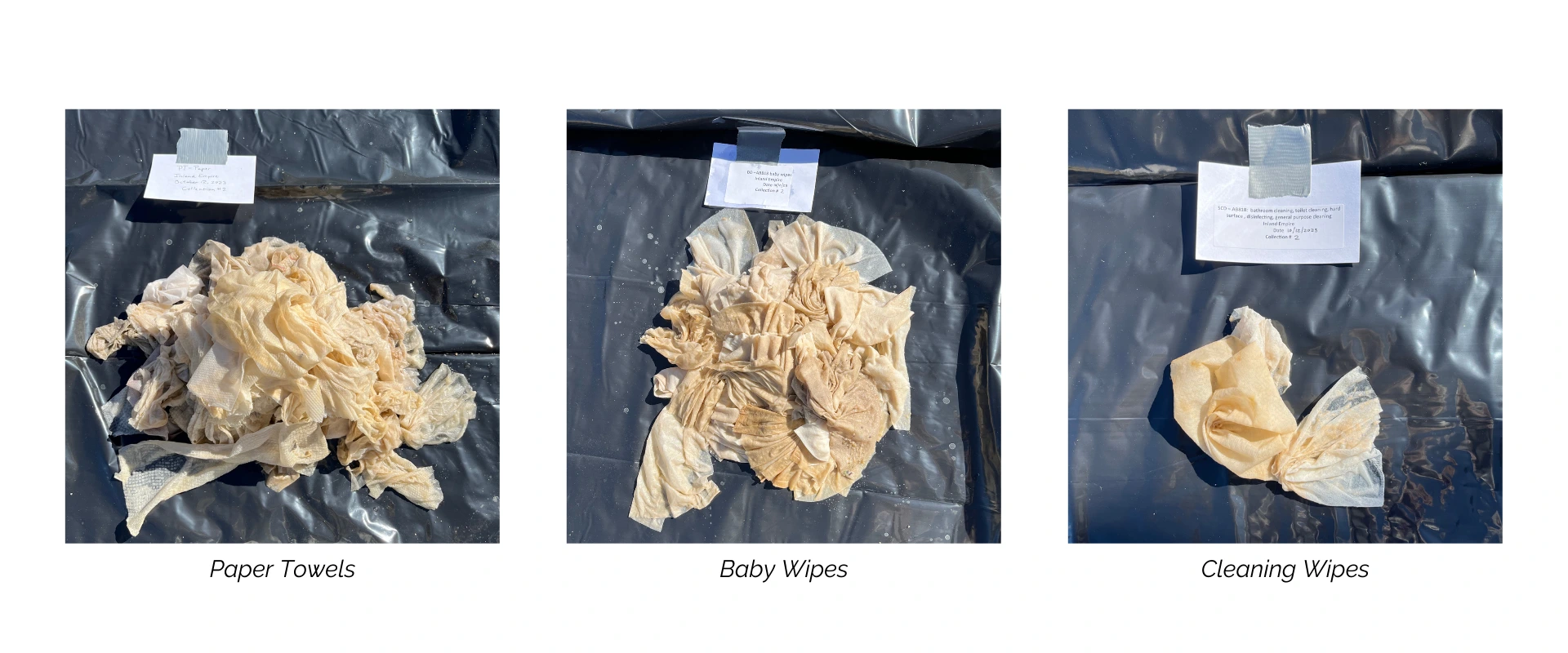Ever wondered why some wipes are labeled as flushable and others have the Do Not Flush symbol? Curious if you can actually trust the labels? You’re not alone!
The world of wet wipes can be confusing, with labels like biodegradable, non-flushable, and flushable leading to potential misunderstandings. At the Responsible Flushing Alliance, we work with experts to gather the latest on wipes technology and wastewater data to figure out the facts, science and data of flushing.
The Science Behind the Wipe: What Makes the Difference
The key difference between flushable and non-flushable wipes lies in their design and the materials from which they’re made.
As Dr. Paul Davies, a polymer chemist and director of Crown Abbey Ltd., explained in an H2O News article: “The fibers selected for flushable wet wipes are much shorter…Flushable wipes are engineered to be strong when the fibers are subjected to the forces associated with wiping, and their shorter fibers that are less strongly bound together, allowing the wipe to disperse when subjected to the forces experienced in a wastewater system.”
Think of it like this:
• Flushable Wipes: Only about 10% of wipes on the market in the U.S. are designed to be flushable. These can also be thought of as moist toilet tissue and are engineered to break down in water, similar to dry toilet paper. They use short, plant-based fibers that are loosely bound. This allows them to be strong enough for wiping, but, importantly, they are designed to disperse quickly when agitated in water. Flushable wipes are meant to be a replacement for, or supplement to, dry toilet paper.
• Non-Flushable Wipes (like baby wipes, makeup wipes, and cleaning wipes): These types of wipes make up the other 90% of wipes sold in the U.S. They are built for durability and serve many, many purposes. Non-flushable wipes use longer, stronger fibers that are tightly bonded together. This makes them great for cleaning or numerous other tasks, but it also means they won’t break down in water. Imagine trying to flush a small cloth — it just won’t disintegrate!
One tricky label to keep an eye out for is “biodegradable.” This does not necessarily mean flushable. It simply means something can break down in some environments. A product might be biodegradable in soil, but not in water, or not quickly enough for our wastewater systems.
Industry Standards Put Flushability to the Test
For a wipe to be truly flushable, it must meet rigorous industry standards. These aren’t just simple “shake in a jar” tests! They involve a series of seven different tests that simulate real-world conditions in drains, pipes, and pumps to determine if wipes can clear toilets, make it through household pipes, disintegrate in sewer systems, avoid causing damage to machinery at wastewater treatment plants, work with common wastewater technologies, and more.
If a wipe fails even one of the seven tests, it cannot carry the “flushable” label.
So, What’s Really Clogging Pipes?
At the Responsible Flushing Alliance, we’ve conducted studies to understand what’s actually causing costly clogs. Our California Collection Study examined items pulled from clogged sewer lines and equipment in wastewater systems at Central Contra Costa Sanitary District in Northern California and Inland Empire Utilities Agency in Southern California. An independent engineering firm designed the study and compiled the findings into a report.
The results were eye-opening:
• Only 0.9% of the items found were fragments of flushable wipes, and these were already in the process of disintegrating, and attached to non-flushable items.
• The vast majority of materials collected (99.1%) were items that should never have been flushed in the first place, including:
- Wipes specifically labeled with the “Do Not Flush” symbol (34%)
- Paper towels (53%)
- Feminine hygiene products (7%)

This data clearly shows that flushable wipes are NOT the primary cause of clogs. The problem lies with people flushing items that are not designed to break down in water.
But where does the confusion come in? Why have we seen media stories saying that flushable wipes aren’t really flushable? A primary reason could be that it took a forensic analysis — a meticulous study of the makeup of each item in each clog — to understand which kinds of wipes, exactly, were to blame in our study. To the naked eye, wipes are essentially indiscernible when lumped together in a big ball with waste, fats, oils and grease. In fact, many of the paper towels at first glance looked like wipes but closer comparison to our product samples (where we looked at textures, patterns, fibers, and sizes) showed they were paper towels. Fortunately, the solution doesn’t require much debate: Read the label — and when in doubt, throw it out!
The Simple Rule: When in Doubt, Throw It Out!
• If a wipes package doesn’t specifically say it’s flushable, it isn’t.
• If a wipes package is labeled with the “Do Not Flush” symbol, throw it in the trash.
• And always remember: The toilet is not a trash can!
By understanding the science and trusting the labels, we can all do our part to protect our homes, communities, and environment.
